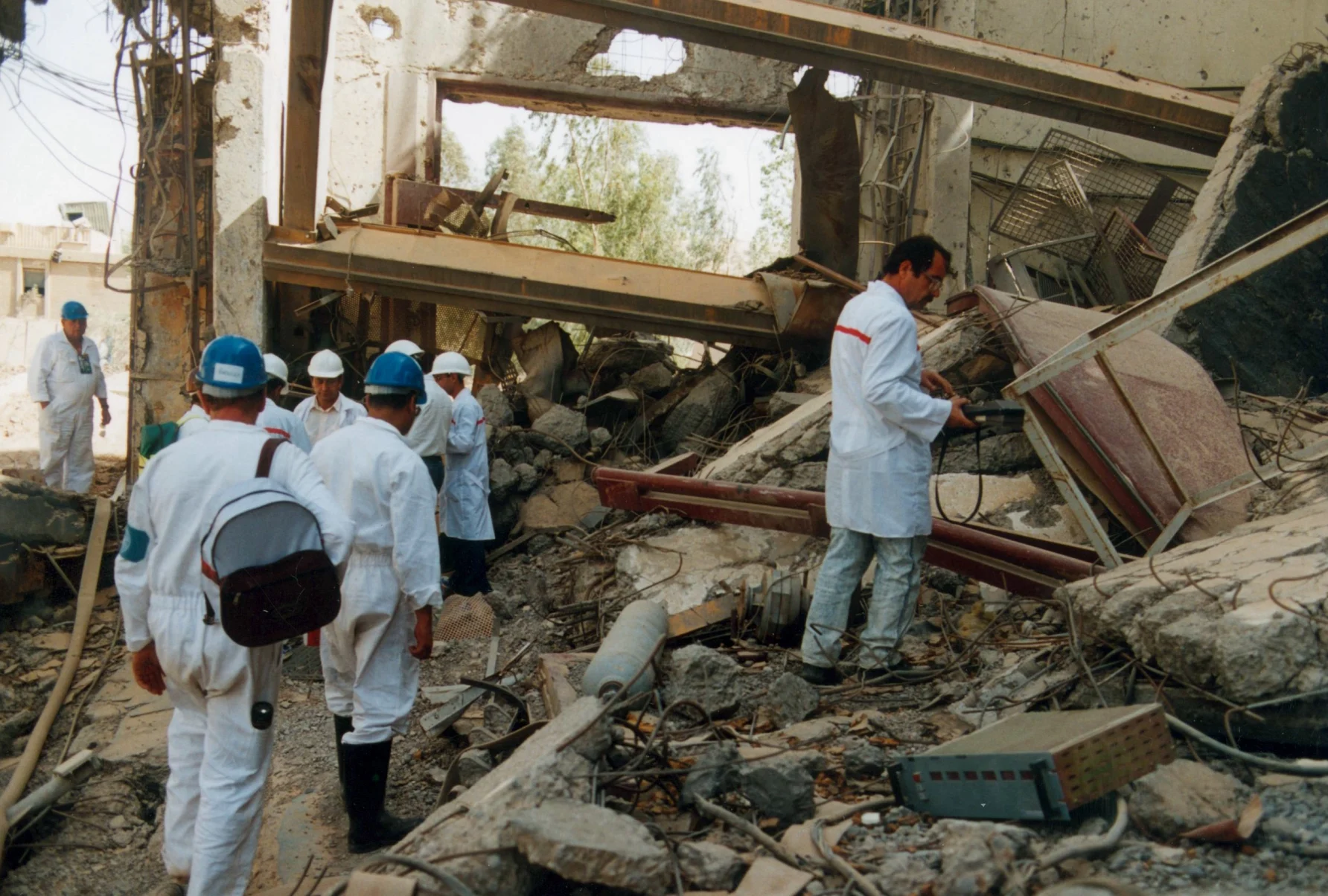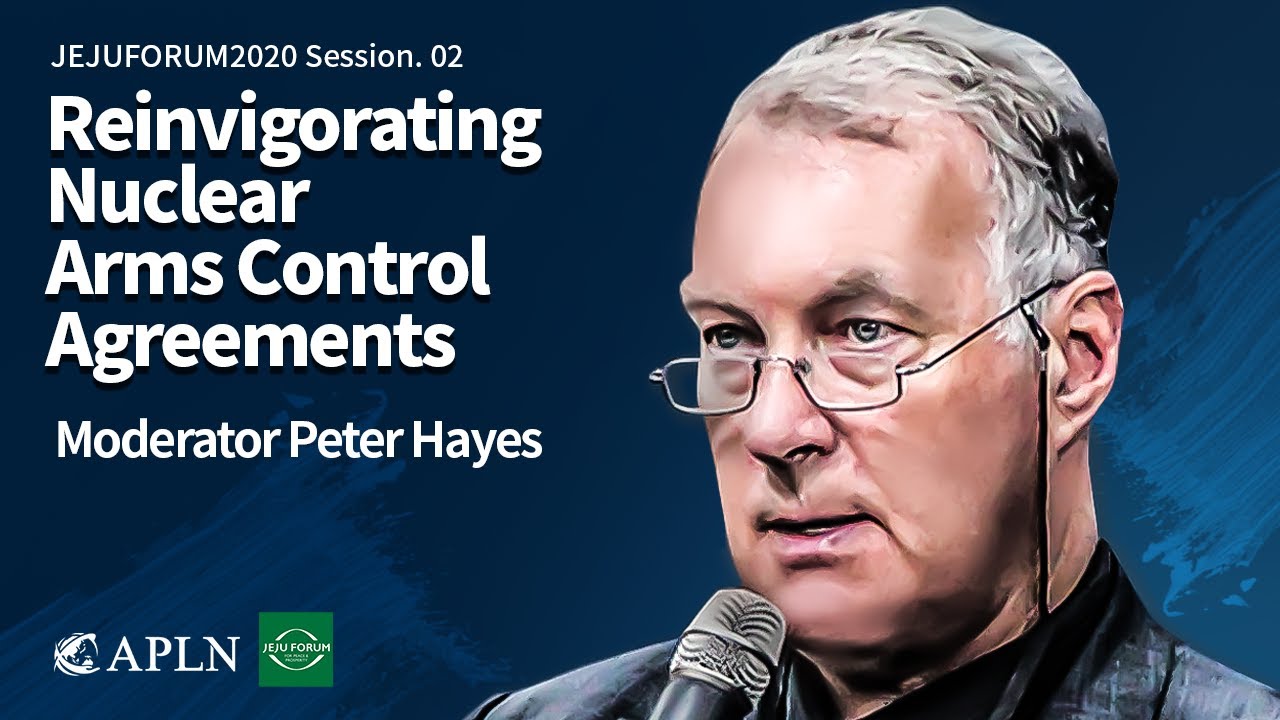Fixing the Blind Spot in Nuclear Inspections
PURSUIT
APLN member Trevor Findlay explains how a blind spot in safeguards culture led to a ‘that’s the way we do things around here’ approach at the IAEA. Lessons have been learned since Iraq. Read the original article here.
When inspectors from the International Atomic Energy Agency (IAEA) returned to Iraq after the 1990 Gulf War, they were shocked by what they found.
Iraq had come much closer to developing nuclear weapons than they had suspected.
It had built an entire parallel nuclear fuel cycle separate from, but in close proximity to, the installations and materials declared to and inspected by the Agency. These revelations resulted in much soul-searching by the IAEA and its member states.
Had the international organisation and its inspectors been ‘asleep at the wheel’, missing what was in plain sight through neglect or incompetence? Had international or intra-Agency politics prevented more thorough inspections or stymied efforts of the IAEA Director General and member states?
Or was there another less tangible element – organisational culture – at play?
Having an appropriate culture has long been recognised as a significant factor in the ability of organisations to fulfill their intended functions. Cultural dysfunction can sometimes even lead to an existential crisis and an organisation’s demise.
From sports clubs to government agencies, to commercial companies, having an appropriate culture is increasingly seen as a key contributor to organisational health.
Organisational culture guru Professor Edgar Schein defines it as “a powerful, latent and often unconscious set of forces that determine both our individual and collective behaviour, ways of perceiving, thought patterns and values”.
For international nuclear inspectors, who seek to determine that a state is not secretly attempting to acquire nuclear weapons, significant ‘cultural drift’ occurred in the IAEA’s approach to undeclared nuclear materials and facilities.
Nuclear safeguards agreements between a state and the Agency, in accordance with the 1970 Nuclear Non-Proliferation Treaty (NPT), provide for inspections to determine that there is no diversion of any nuclear material from peaceful purposes.
The process begins with a declaration by the state of all its nuclear material holdings, including types and amounts and their location. Inspectors seek to confirm the veracity of these declarations.
During the negotiations on the model safeguards agreement in the early 1970s, the South African delegation sought to restrict safeguards only to declared material. This proposal was defeated on the logical grounds that a state intent on cheating could simply fail to declare all its holdings.
But this is exactly the blind spot in safeguards culture that developed in subsequent decades and that Iraq then exploited.
Inspectors became intent on verifying states’ declarations to ensure their correctness, while neglecting to consider whether they might be complete – or not.
Nuclear accountancy and control became a box-ticking exercise.
Safeguards veterans and even those who negotiated the agreements are still at a loss to explain how this could happen. But it’s in the nature of culture that it embeds itself gradually, becoming accepted over time as ‘the way we do things around here’.
There are some explanatory clues as to what happened.
Nuclear safeguards had always been something of a ‘gentleman’s agreement’. States committed themselves never to acquire nuclear weapons but were always reluctant to accept the intrusive, expensive and bothersome inspections that would help determine whether there were hidden, undeclared nuclear programs.
The assumption was that states would not go to all the trouble of becoming party to the NPT and negotiating a safeguards agreement if they intended to develop nuclear weapons.
IAEA inspections were already an unprecedented intrusion on the sovereign prerogatives of states and the Agency already had enough work on its hands setting up a global system of inspections for declared materials to be worried about ‘unknown unknowns’.
Inspectors were consequently not encouraged or trained to look out for ‘signals’ of undeclared materials or activities.
Governments were also reluctant to provide intelligence to an international organisation like the IAEA that might have indicated potential violations but which might also reveal secret ‘sources and methods’.
So-called Special Inspections that were supposed to be requested whenever the Agency felt it did not have sufficient information to judge compliance were also subject to cultural drift, falling into abeyance to the point they were considered too politically sensitive to initiate.
When the Agency requested one of North Korea, it simply said no.
Several psychological factors were also at play in the culture. One was complacency and confirmation bias.
Prior to the Iraq case, there had never been a major, intentional violation of safeguards. Past experience was taken as a guide to the future.
A second factor was cognitive dissonance. Although there were media reports of nuclear smuggling by Iraq, unexplained events at its nuclear facilities, and public declarations by President Saddam Hussein of his nuclear aspirations – not to mention Israel’s 1981 bombing of Iraq’s Tamuz reactor on suspicion that it was part of a nuclear weapons program―no extra scrutiny was made of Iraq.
To be fair, at the time safeguards inspectors were not permitted to consider open sources like media reports in their compliance assessments, but had to rely solely on information from declarations and inspections.
The good news is that the IAEA has learned its lesson and in the subsequent three decades significantly reformed and strengthened its safeguards regime, in what it describes as a ‘revolution’.
While the Agency has not avowedly paid attention to organisational culture, the culture has changed inevitably with a new focus on verifying the ‘correctness and completeness’ of states’ declarations; the adoption of new technology like satellite imagery and particle sampling; better recruitment and training of inspectors and analysts; the systematic use of both intelligence and open-source information; and a focus on each state’s entire territory and activities rather than just their known nuclear infrastructure and materials.
States have increasingly adopted a voluntary Additional Protocol to their safeguards agreements that obliges them to provide ‘cradle-to-grave’ information on their nuclear fuel cycles and gives the Agency greater inspection rights.
This is not the end of the story, however.
Organisational culture is constantly evolving and needs to be monitored and shaped. The IAEA’s culture will inevitably change through the laudable determination of Director General Rafael Mariano Grossi to aim for gender parity by 2025, and the drive to recruit more staff from developing countries.
There are also questions about how well the Agency’s organisational culture has withstood the persistent refusal of Iran to resolve long standing non-compliance concerns and by its gradual withdrawal of cooperation with the Agency in verifying the Joint Comprehensive Plan of Action (JCPOA) designed to constrain Iran’s nuclear capabilities.
Even Australia’s proposed nuclear-powered submarines will test the Agency’s culture. Designing a credible, unprecedented safeguards arrangement for highly-enriched uranium at sea will challenge the culture’s new ‘correctness and completeness’ mantra.
In the meantime, the Agency should factor organisational culture assessments into its long-term strategic planning and commission an in-depth survey of its staff by external management experts.
As organisational theorist Peter Drucker once reportedly said, ‘Culture eats strategy for breakfast’.
Image: The remains of a facility used for Iraq’s clandestine nuclear weapons program. Picture: Action Team 1991-1998/IAEA



